Here is today’s episode of the “Campfire Talks with Herbie”.
TameFlow Community Member: Katharine Chajka
Name (and Company/Affiliation if desired)
Who are you?
![]()
From 9 -5 I am a software engineer turned lean-agile coach and trainer. I help lead organization-wide transformations. I also create courses and teach project management as an adjunct professor at Syracuse University and support my local PMI.
Outside of my 9 -5 I own a small horse farm, and train horses, in particular, wild Mustangs, which has always been my dream.
How did you get involved with Agile, Coaching, Organizational Performance - and in particular with TameFlow?
In the early 2000s, I was part of a great leadership development program at Lockheed Martin, where participants rotate across different areas of the business. Fresh out of my undergraduate degree in Computer Science, I wanted to hop right into writing code. It was much to my dismay that my first rotation was in manufacturing. As disappointed as I was at first, it turned out to be one of the best things that ever happened to me. Not only did I meet amazing people and gain a different perspective, but I also became a Lean Six Sigma Blackbelt and fell in love with Lean.
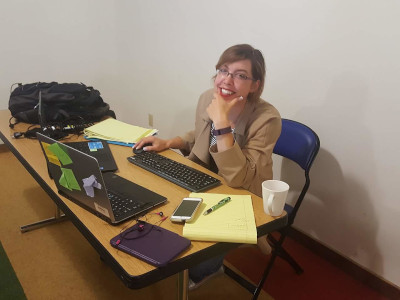
While there I earned my Masters in Computer Engineering. When my rotation was over, I returned to software and had all these great ideas of how lean could apply to software development. Unfortunately, these ideas were very quickly discounted. I was told that lean thought was for manufacturing, not knowledge work. I did not have half the boldness I have now, so I let it sit on the back burner, but never forgot it. Eventually, I found agile thanks to Dottie Acton, a Senior Fellow who ran an agile bookclub and the rest is history. What really inspired me was having an amazing manager, Eric Wagner. Eric Wagner was a true lean agile leader. Eric encouraged us to learn and try new things. He supported our growth as a self-organizing, empowered team, which lead to some amazing results. In order to share those results, I started training and coaching until eventually all my time was spent coaching and training to help further share success stories. My goal is to pay it forward and empower teams as Eric empowered us. I would have never learned so much if I wasn’t allowed to try. Learning involves a lot of attempts that may or may not be successful. To allow and support a team through true learning is so rarely seen and very critical. That inspired me to champion empowering teams. I am fortunate to be able to continue to work with supportive, amazing leaders and teams.
Are you currently (or do you intend) making a living in this sector? And with TameFlow?
I am currently working as a coach and trainer. Even though becoming a coach and trainer was never my plan, I get to meet a lot of people who share my passion and I really enjoy it. I will continue to train and coach but will likely be helping grow the training and coaching practice as well. TameFlow is my current focus as I found that many struggle to empower teams and improve outcomes with current frameworks and practices. I was incredibly happy when I found Daniel Dorion and he shared TameFlow with me. The TameFlow approach is exactly what I was hoping to find over the past several years. TameFlow cuts to the chase by pinpointing where to look to most quickly improve outcomes without significant disruption, new roles, etc.
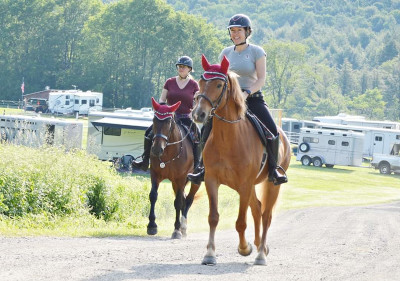
Give us a typical day in your life!
I wake up at 6, plan what I want to accomplish for the day with lots of coffee, read for an hour (either agile or horse training) then do my stable chores, dog walk, and horse training before work. At work, my first calls are typically strategizing future direction, followed by coaching and training calls, creating and reviewing content. I’m fortunate that I get to work with many teams, leaders, and areas across the org. After work, I eat dinner with my family, exercise the horses and dogs, create content for the University or otherwise and try to be in bed at 10.
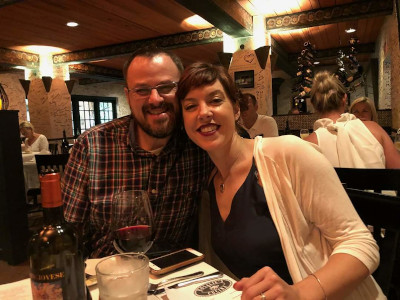
What makes you happy at the end of a day?
Knowing that I was able to help, making someone’s day brighter. Seeing my horses in training continually improve. Being able to spend time with my family.
What’s the most important skill or insight you’ve developed while getting involved with this industry?
Now that my career is based on people and change, I had to take a real crash course to learn how people and change operate. I had no idea when I started my career about anything in this area. One of my favorite quotes is that “people don’t care how much you know until they know how much you care.”
What are the greatest challenges on your path to using/improving the techniques you favor in this sector? Where do you see TameFlow in this?
TameFlow is a large part of the techniques I help teach and coach for improvement. The biggest challenge that I’m certainly no stranger to is scaling it up to a large number of people successfully. To have it be used to empower teams and management.
What are the greatest rewards you’ve had (personally or professionally) or would like to receive in this industry?
Empowering people, earning respect as an expert in my field.
What do you want to learn from a community of peers, like the one here TameFlow Community site?
Perspective from different industries, what the parallels and differences are.
What question(s) would you like to ask Steve, or what topics would you like him to develop ( in relation to the TameFlow Approach)?
The two big questions on my mind are how to scale the learning and support as well as how to best support management in making this large mental model shift.
If other TameFlow enthusiasts want to reach out to you, where do they find you? And what is your TameFlow Community handle?
I can be found on LinkedIn and my TameFlow Community handle is Kchajka!
Herbie talks about…How to “Scale” TameFlow
Scaling with TameFlow is a non-issue, because the approach is scale-free. However introducing TameFlow across an organization is done differently than with most other approaches.
Agile transformations typically start with one team, then expand horizontally to cover all teams, then move “upwards” in the company hierarchy. Then they start creating “scrums of scrum” and “teams of teams” to be able to manage the larger footprint. Unfortunately they often run into a wall - namely at the management level where KPIs go from being operational (like “velocity”) to financial. Such an approach will rarely “scale” to reach the top of the organization.
Lean transformations go in the opposite direction, top-down. Often they employ armies of consultants, as the approach is very much “Big Bang” and everybody, everywhere needs to be trained before the method is made effective. Such approaches will run a huge risk of failure, because the people on the ground cannot see what benefits they might bear for them.
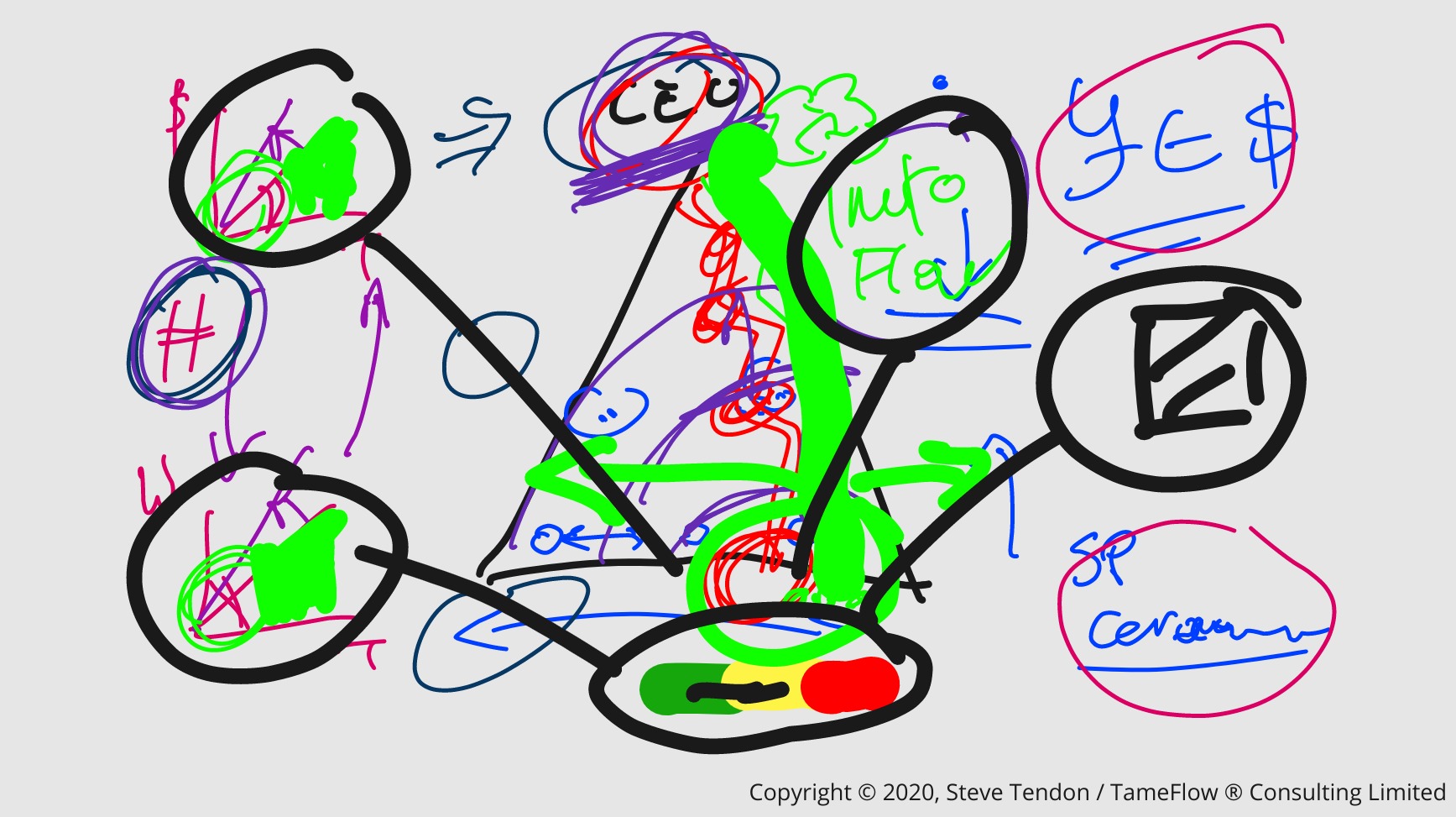
In TameFlow the approach is different. The above sketch was drawn during the “Campfire Talk”, and it is probably easier to follow the explanation in the video about how TameFlow can affect the entirety of even the largest organization.
The trick is to start with a single vertical slice, that starts at the CEO and through all intermediary management level reaches down to one or a few teams. The intention here is to rewire the “nervous system” of the company and start getting the benefits of effective Informational Flow. This happens while Throughput Metrics are introduced both at the bottom, with Operational Throughput, and at the top, with Financial Throughput. This creates a common numeric language between management and operations. Decisions made with respect to the operational metric will improve the financial metric and vice-versa.
The new nervous system finds its synapses in the MOVE Buffers. Through Work Execution Signals and Work Item or issue in need of attention is quickly escalated to the correct organizational level (through the succession of Span of Controls and Sphere of Influences), where a conclusive decision can be made.
As we saw in the Campfire No. 2, Buffer Management can also be used to keep the teams in a collective mental Flow State
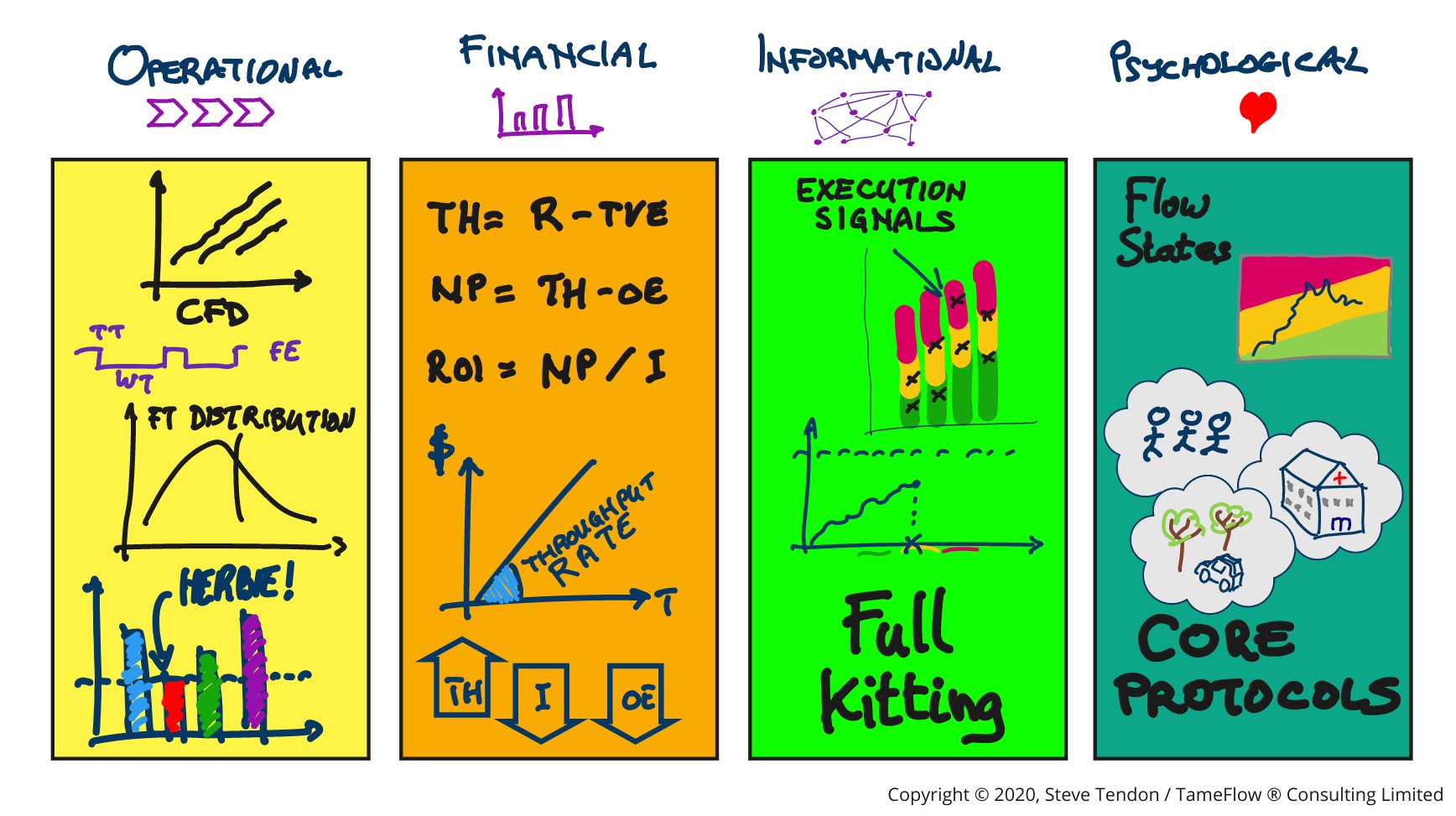
Hence, in this vertical slice of the organization, we are exercising all four flows: Operational Flow, Financial Flow, Informational Flow and Psychological Flow. Once the CEO experiences the benefits, they will be the prime driver for extending the usage of the TameFlow Approach; and this will be done by exercising one “slice” at a time. The coverage of the entire organization can happen very quickly
If you found the topics in the “Campfire Talks with Herbie” interesting, there is much more to learn about them in the Tame your Work Flow, How Dr. Goldratt of “The Goal” would apply the Theory of Constraints to rethink knowledge-work management book.
To ensure you don't miss future episodes of the "Campfire Talks with Herbie", subscribe to receive the email notifications about the upcoming events.
